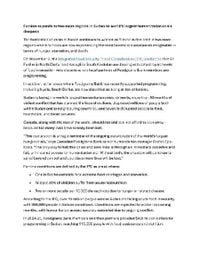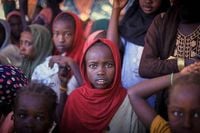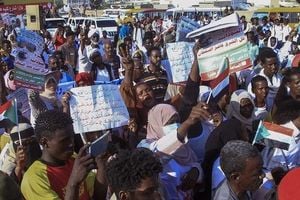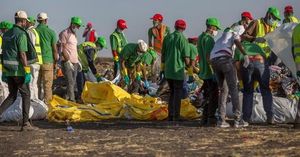On November 4, 2025, the United Nations sounded alarms over the deepening food crises in both Sudan and South Sudan, revealing a grim landscape where millions are trapped between war, displacement, and hunger. The latest findings from the UN-backed Integrated Food Security Phase Classification (IPC) analysis paint a dire picture: famine has been formally declared in two Sudanese cities, while South Sudan teeters on the edge of a catastrophic humanitarian disaster unless urgent action is taken.
In Sudan, the situation has reached a critical juncture. According to a joint release from the Food and Agriculture Organization (FAO), the World Food Programme (WFP), and UNICEF, famine conditions have been confirmed in El Fasher, the capital of North Darfur state, and Kadugli in South Kordofan. Both cities have been largely cut off from humanitarian aid due to relentless conflict, leaving residents without reliable access to food or medical care for months on end. The siege of El Fasher, which lasted more than 500 days before the city fell to rebels last week, stands as a stark testament to the suffering endured by civilians and aid workers alike. Hundreds are believed to have been killed, and many more remain trapped behind barricades, their fates uncertain.
The numbers are staggering. As of early November, roughly 21.2 million people in Sudan—representing 45% of the population—are facing high levels of acute food insecurity. While the IPC analysis notes that an estimated 3.4 million people are no longer facing crisis levels of hunger, these improvements are described as "fragile" and highly localized. The UN agencies warn, "The wider crisis has shattered the economy and vital services, and much of the infrastructure people rely on has been damaged or destroyed."
Some glimmers of hope have emerged in states such as Khartoum, Al Jazirah, and Sennar, where the easing of conflict since May 2025 has allowed families to return and food security to stabilize. Favorable crop conditions following the harvest are expected to improve the situation for some, potentially reducing the number of people in crisis to 19.3 million through January. However, these gains are limited. Many returning families have lost everything and will struggle to benefit from the harvest, while violence and instability continue to rage in western regions like North and South Darfur, as well as West and South Kordofan.
The Famine Review Committee projects a risk of famine in 20 additional areas across Greater Darfur and Greater Kordofan, including rural localities, displacement camps, and several new locations in East Darfur and South Kordofan. In Dilling, South Kordofan, conditions are believed to be as dire as in Kadugli, but insufficient data—due to restricted humanitarian access and ongoing hostilities—prevents formal classification. In the Western Nuba Mountains, marginal improvements have been noted, yet the threat of famine remains high unless humanitarian corridors open up.
Malnutrition rates are alarmingly high. In El Fasher, Global Acute Malnutrition (GAM) rates range from 38% to 75%, while in Kadugli the rate hovers near 30%. Compounding the crisis, outbreaks of cholera, malaria, and measles are spreading in areas where health, water, and sanitation systems have collapsed. The UN agencies underscore the urgency of the situation, warning that hunger is expected to worsen starting in February as food stocks dwindle and fighting continues.
Against this backdrop, UN Secretary-General António Guterres issued a public appeal on November 4, calling for an immediate ceasefire in Sudan. In his words, "I appeal to the Sudanese Armed Forces and the Rapid Support Forces to come to the negotiating table to bring an end to this nightmare of violence." The images emerging from El Fasher and elsewhere—many showing apparent mass killings—have only heightened international concern and the sense of urgency surrounding the crisis.
Meanwhile, across the border in South Sudan, the humanitarian outlook is equally bleak. The UN warned that the country faces a severe food and nutrition crisis projected to worsen unless urgent humanitarian action is mounted. The latest IPC report projects that over half the population—approximately 7.56 million people—will face crisis or worse levels of hunger during the 2026 lean season, which stretches from April to July. More than two million children are expected to suffer from acute malnutrition during this period.
The roots of South Sudan's hunger crisis are tangled and complex. Escalating conflict, widespread displacement, economic turmoil, climatic shocks, and the erosion of community coping mechanisms have all contributed to an environment where food insecurity is both widespread and deepening. Humanitarian access remains critically constrained by insecurity, looting, poor roads, and flooding, isolating entire communities for months and preventing life-saving aid from reaching those most in need.
The situation is particularly dire in Luakpiny/Nasir and Fangak counties, where some 28,000 people are already facing Catastrophic (IPC Phase 5) levels of hunger—the most severe classification. The southern parts of Luakpiny/Nasir County are at risk of famine if conflict and access restrictions persist, especially as flooding and disease outbreaks continue to batter the region. The IPC warns that an unprecedented six counties are projected to reach the most critical levels of acute malnutrition in 2026, primarily due to conflict-driven displacement, restricted access to food and essential services, and a spreading cholera outbreak. In total, 2.1 million children under five and 1.1 million mothers are at risk of acute malnutrition by June 2026.
Meshack Malo, FAO Representative in South Sudan, highlighted the importance of stability and agricultural recovery, stating, "The hunger we are witnessing in South Sudan partly stems from disrupted agricultural seasons and agri-food systems that are sufficient to meet the country's food needs. Achieving lasting peace and revitalizing agri-food systems are essential to ending hunger. When fields are cultivated and markets are restored, families will reclaim their dignity."
WFP's Country Director in South Sudan, Mary-Ellen McGroarty, echoed this sentiment: "The persistent high levels of hunger are deeply troubling. In counties where peace has held, and actors have consistent access, as well as resources, people have taken the first steps towards recovery. While this progress is encouraging, it is crucial that we sustain the momentum to ensure lasting positive change across all affected communities."
UNICEF country representative Noala Skinner added, "This analysis paints a very worrying picture, with persistent high levels of severe malnutrition for the youngest children. These children are not to blame for the factors that have caused displacement and closure of nutrition sites. Safe access and continuity of life-saving health and nutrition services to all affected areas are critical and urgent."
As the window for humanitarian action narrows, the international community faces a stark choice: mobilize urgent and sustained support to save lives and protect livelihoods, or risk witnessing the deepening of a crisis that has already left millions in its wake. The stories of Sudan and South Sudan serve as sobering reminders of the devastating toll of conflict—and the urgent need for peace and humanitarian access.





